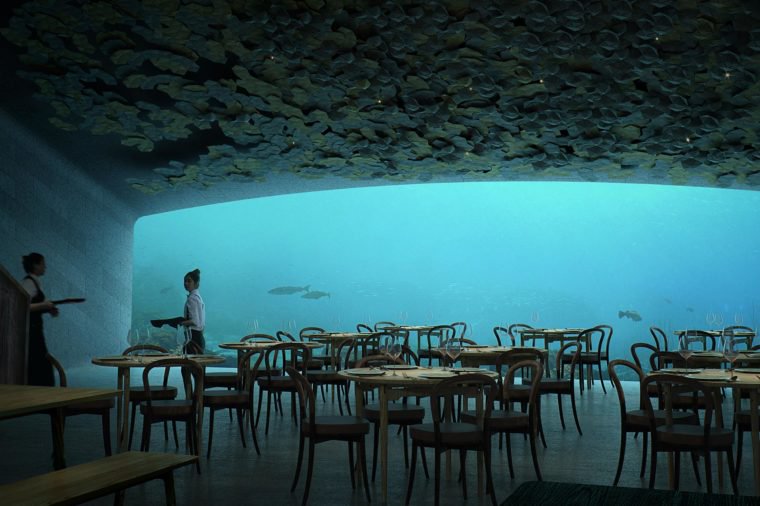Start channeling your inner Ariel because this Norwegian restaurant is quite literally “under the sea.” The Norwegian village of Båly is going to become home to Europe’s very first underwater restaurant in 2019, and we can thank Snøhetta for its existence. (Don’t miss these breathtaking underwater hotels.)
According to under.no, the restaurant, which will be called Under, will primarily focus on seafood. “Given our location, it is natural for us to focus on seafood. But also local specialties gathered from the woods, the garden, underwater, and at the beach will be found on our particular menu.”

Now to answer the question everyone’s wondering: How safe is it to be dining in there exactly? According to snohetta.com, the restaurant is five meters underwater, and its meter-thick concrete walls can withstand a fair amount of pressure and shock, even when there are rough sea conditions. (By the way, never do this one thing in Norway.)
Once inside the submerged dining area, the experience is like no other. “Our goal is to show off the Norwegian coastal ecosystem, and in doing so, creating a new niche for underwater tourism,” says Under’s website. “Our visitors will be given a unique opportunity to experience the underwater world in the area—and admire marine life in ways they otherwise may never see.”

The best part? Giant acrylic windows allow guests to marvel at the marine life around them while they’re eating, creating a feeling of truly being part of the ocean. (Speaking of the ocean, you need to see these gorgeous beaches with crystal clear water.)
The design of the restaurant takes into great consideration how it will affect its surrounding marine life. “The sleek, streamlined form of the building is encapsulated in a concrete shell with a coarse surface that invites mussels to cling on,” says snohetta.com. “Over time, as the mollusk community densifies, the submerged monolith will become an artificial mussel reef that functions dually to rinse the sea and naturally attract more marine life to its purified waters.”












